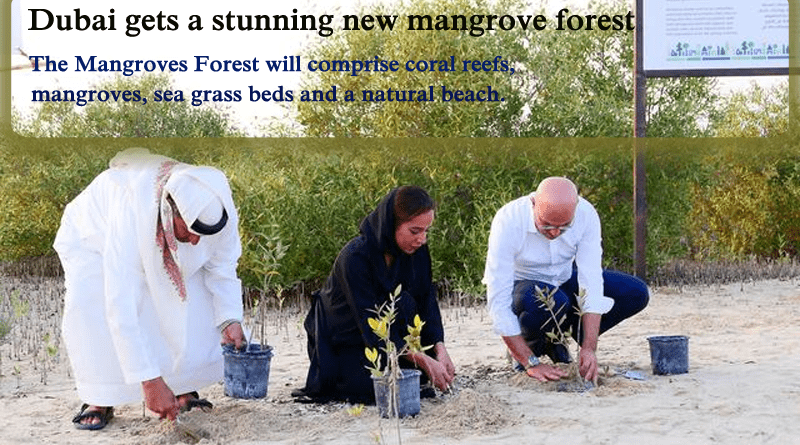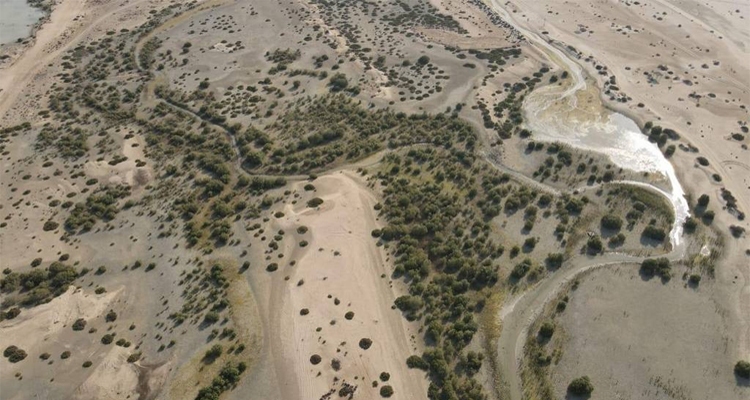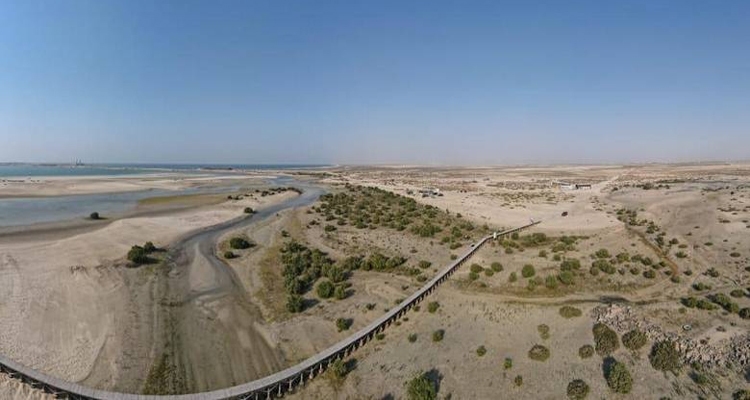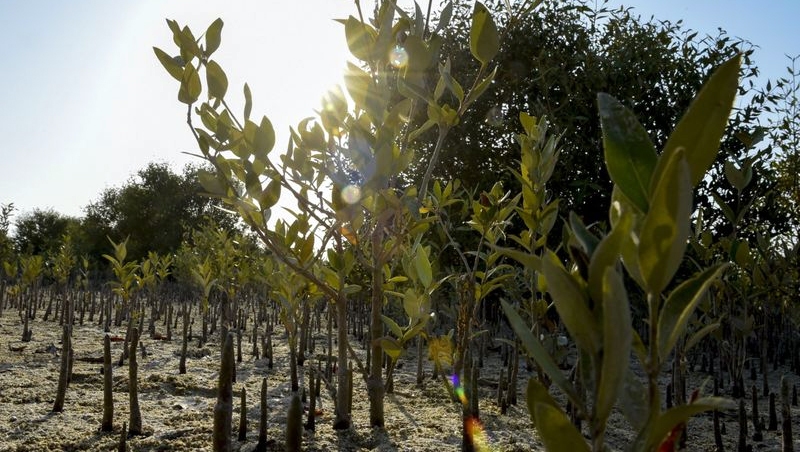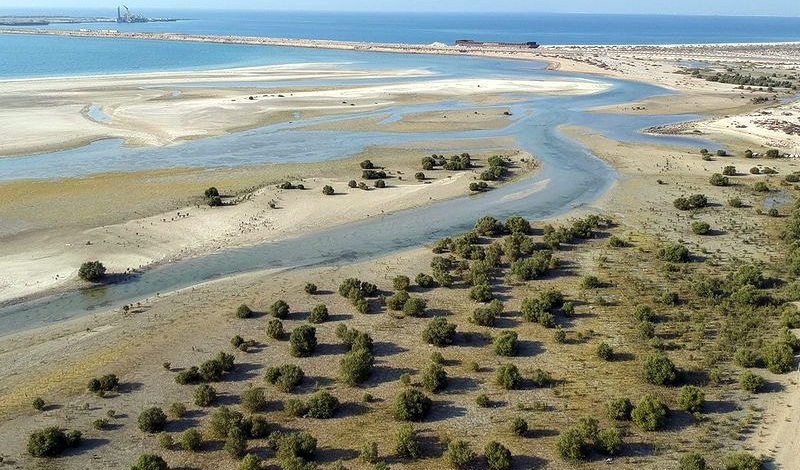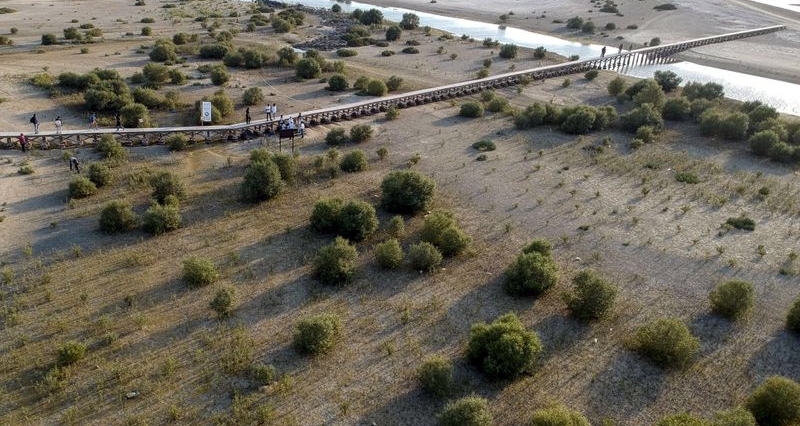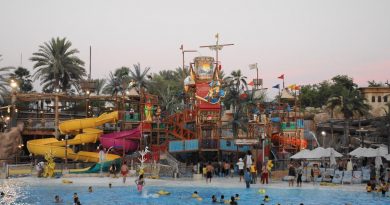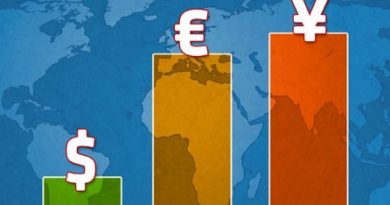Dubai Mangrove Forest : The City Gets a Stunning New Mangrove Forest
Emirates Marine Environmental Group (EMEG) and Procter & Gamble (P&G) launched the Dubai Mangrove Forest project on Monday 19th April. The forest is located at the United Nation reserved Jabel Ali Wildlife Sanctuary. The project was launched as a part of the plan of transforming 60% of Dubai land into natural reserves by 2040 and also to transform Dubai into the world’s best city to live and work in.
Recently His Highness Sheikh Mohammed bin Rashid Al Maktoum had announced that areas dedicated to economic and recreational activities will double, also public beach areas will increase by 400% over the next 20 years and 60% of Dubai’s area will be consist of nature reserves.
About one thousand mangrove trees have been planted along the coastline. The plan is to cover 500,000 square meters of the area into the green forest. Environmental experts will develop the area into a full-fledged forest. The forest will also comprise coral reefs, seagrass beds and a natural beach that will become the breeding ground for endangered species of turtles.
Dubai Mangrove Forest and Natural Environment
Experts say mangroves are crucial to biodiversity health with three-quarters of all tropical fish species born within mangrove forests.
Major Ali Al Suweidi, the founder and the president of (EMEG), said: “The mangrove is a local species and we call it Sena Marina which is a special species in the Gulf. This species grows because of heat and we have saltwater and therefore this species grows very well here. We started to plant this a long time back. We have mangroves in Abu Dhabi, Sharjah and Dubai. The reason we are planting this mangrove is that it soaks up five times more carbon dioxide than any plant. This is a good solution against global warming and other problems.”
Ali Al Suweidi added: “This is the only plant where the roots come up instead of going down. So they come up to take saltwater and make freshwater. It’s amazing. In Ras-Al-Khor Wildlife Sanctuary there are huge mangrove covers and here also we have 500 or more which is good for the environment”.
Wetlands to Home Bird Species
The area will also have about 6km of wetland to make it a home to many species of birds.
Al Suweidi said: “The wetland always has many kinds of birds. The mangrove is also good for crabs, oyster and it’s amazing to see them grow very well in this area and the gazelle also come here to take salt from here”.
Omar Channawi, CEO of P&G Middle East, East & West Africa and General Export Markets added, “We are very thankful for the support of Major Ali, EMEG and EcoMatcher and are very proud of being able to launch this initiative together. Regionally, this campaign is focused on helping bring nature back to life, and we felt it particularly significant for the regeneration to take place in the desert. The move aligns with Dubai 2040 Urban Master Plan’s mission to double green areas to provide a healthy environment for residents and visitors.”
Who Can Visit Mangrove Forest
Well, the Dubai Mangrove Forest is not open for the general public at the moment. However, the plan is to have more educational school trips. Also, it may open for the public during the Eid ul Fitr holidays. The visits can be booked online.
According to Al Suweidi, He said: “We will be organising trips for a small number of people at a time. It is especially good for children so they can learn to take care of the environment. They are the future and we want to pass these lessons down to them”.
A single wooden ramp or boardwalk has been built in the forest to allow visitors to get a better look at the mangrove forest and its wildlife.

